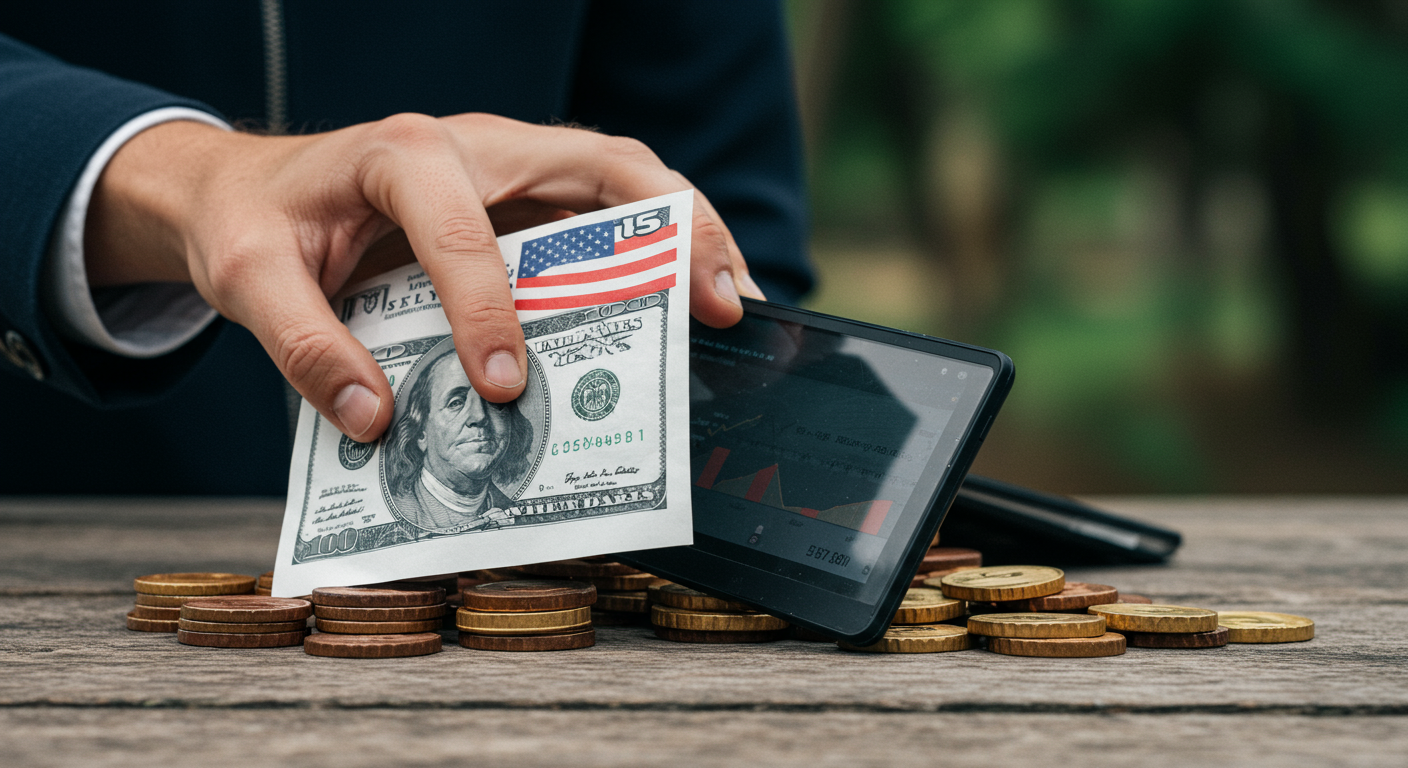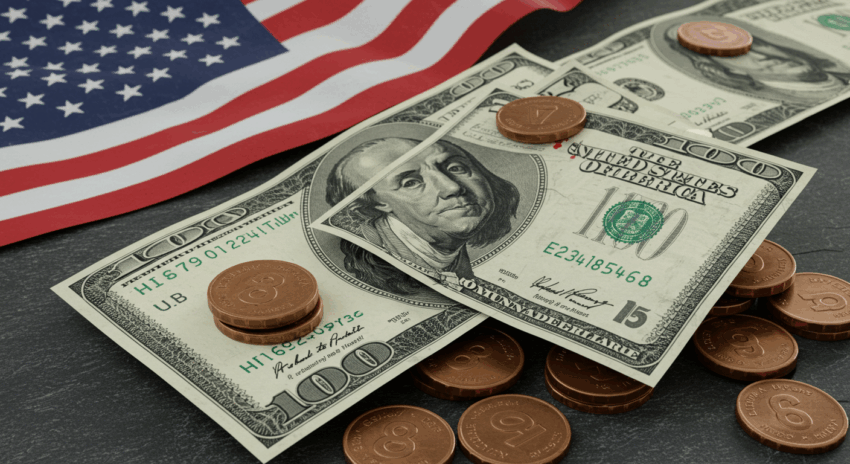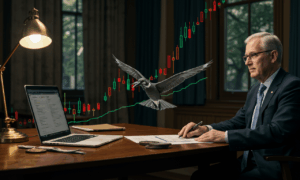The latest US inflation report has just sent a wave of relief through households and financial markets, but the celebration might be premature. In a classic case of “good news, but…,” recent economic data reveals a complex picture of our financial landscape. While the cost of living showed signs of easing in May, the Federal Reserve is tapping the brakes on excitement, signaling that the fight against rising prices isn’t over yet. This article will break down exactly what these numbers mean, why the nation’s central bank is acting so cautiously, and most importantly, how this economic tug-of-war impacts your personal finances.
A Welcome Cooldown: Unpacking the May Inflation Data
For months, every trip to the grocery store or gas station has been a stark reminder of persistent inflation. However, the latest Consumer Price Index (CPI) report for May brought a welcome surprise. The data showed that, on average, prices did not increase at all from April to May. That’s a 0.0% change, a figure we haven’t seen in nearly two years.
Let’s look at the key figures:
- Monthly Inflation: 0.0% (down from 0.3% in April). This indicates that the upward price pressure stalled for the month.
- Annual Inflation: 3.3% (a slight decrease from 3.4% in April). This means that while prices are still higher than they were a year ago, the rate of increase is slowing down.
- Core Inflation: This is a crucial metric that the Federal Reserve watches closely. It excludes volatile food and energy prices to get a better sense of underlying inflation trends. Core CPI rose by only 0.2% in May, the smallest increase since October 2023, with the annual rate falling to 3.4%, a three-year low.
So, what does the Consumer Price Index (CPI) actually measure? Imagine a giant shopping basket filled with goods and services that a typical urban household buys. This includes everything from rent and electricity to gasoline, groceries, clothing, and even haircuts. The CPI tracks the total cost of this basket from month to month. When the total cost goes up, that’s inflation. It’s the most widely used measure of the cost of living and directly affects the purchasing power of your money.

The Federal Reserve’s Cautious Stance: Why No Interest Rate Cut?
On the very same day this positive inflation news was released, the Federal Reserve (often called the Fed) concluded its policy meeting. Given the good news, many hoped for a clear signal that interest rate cuts were imminent. Instead, the Fed announced it would hold its benchmark interest rate steady in the 5.25% to 5.50% range, a two-decade high.
But why the caution? While one month of good data is encouraging, the Fed needs to see a sustained trend of inflation moving back toward its 2% target. Central bankers are like pilots navigating through turbulence; they don’t want to change course too quickly based on a single gust of favorable wind. They fear that cutting rates prematurely could reignite price pressures, forcing them to take even harsher measures later on. For more foundational knowledge on economic indicators and policies, you can explore our economy section.
In its updated economic projections, the Fed’s committee members signaled that they now anticipate only one interest rate cut in 2024. This is a significant shift from their forecast in March, when they projected three cuts. This “higher for longer” stance on interest rates is the Fed’s primary tool for taming the economy. By making it more expensive for businesses and consumers to borrow money, they aim to cool down demand and, in turn, bring prices under control.
What This Economic Duel Means for Your Wallet
For Borrowers: The Cost of Debt Remains High
The Fed’s decision to keep rates high means borrowing money will stay expensive. If you’re looking to get a mortgage, a car loan, or carry a balance on your credit card, you’ll continue to face high interest charges. For example:
- Mortgage Rates: While not directly set by the Fed, mortgage rates are heavily influenced by its policy. They are likely to remain elevated, making homeownership less affordable for many.
- Credit Cards: The Annual Percentage Rates (APRs) on credit cards are often variable and tied to the Fed’s benchmark rate. This means carrying a balance will continue to be very costly.
For Savers: A Silver Lining
There’s a bright side to high interest rates. If you have money in savings, you can benefit from higher returns. High-yield savings accounts (HYSAs), money market accounts, and certificates of deposit (CDs) are currently offering some of the best rates in years. This is an excellent opportunity to make your emergency fund or short-term savings work harder for you.
For Investors: A Market of Mixed Signals
The stock market often reacts emotionally to economic news. The initial report of slowing inflation was met with a rally, as lower inflation is generally good for corporate profits and consumer spending. However, the Fed’s sober forecast of only one rate cut tempered some of that enthusiasm. This creates a complex environment for investment. A stronger-than-expected economy is good for stocks, but prolonged high interest rates can be a headwind. Investors will be watching future economic data with an eagle eye for clues about the Fed’s next move.
In summary, we’re in a delicate phase. The recent inflation report is a significant step in the right direction, offering hope that the worst of the price hikes may be behind us. However, the Fed’s cautious approach reminds us that the path to a stable economic outlook is a marathon, not a sprint. Staying informed and adapting your financial strategy to this evolving landscape is more important than ever.
Frequently Asked Questions (FAQ)
So if inflation slowed to 0%, does this mean prices are going down?
This is a common and important question. A 0% monthly inflation rate does not mean prices are falling; it means they did not increase, on average, during that specific month. The overall price level remained stable from April to May. For prices to actually decrease, we would need to see a negative inflation rate, a phenomenon known as deflation. The annual inflation rate of 3.3% still shows that prices are significantly higher now than they were one year ago. The recent data is positive because it shows the *rate of increase* is slowing down, a process called disinflation.
What should I watch for next to know when the Fed might cut interest rates?
To get a sense of future rate cuts, you should keep an eye on two key things. First, the upcoming monthly CPI reports. The Fed has stated it needs “greater confidence” that inflation is moving sustainably toward its 2% target, and that will require several more months of favorable data. Second, pay attention to labor market data, such as the monthly jobs report. A significant weakening in the job market could prompt the Fed to cut rates sooner to support the economy, even if inflation isn’t perfectly at its target. The Fed’s next policy meetings will be the ultimate decision points.



